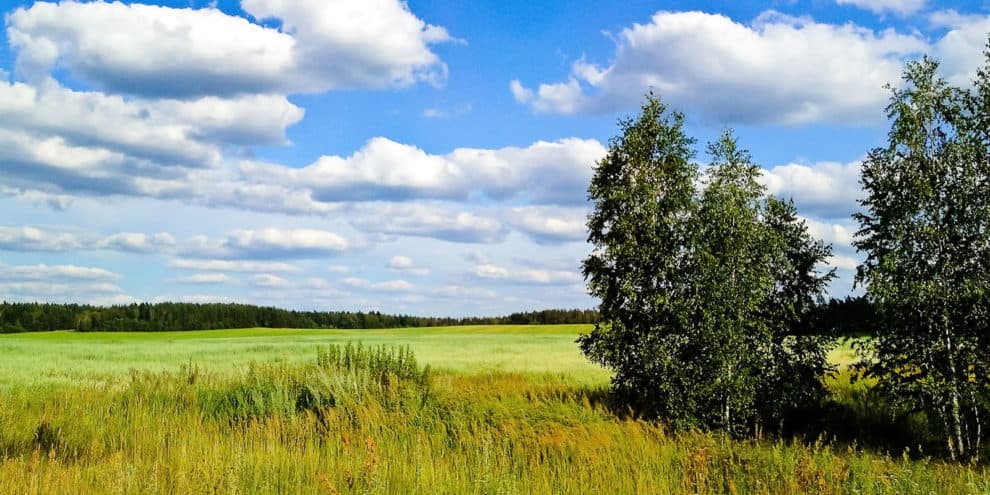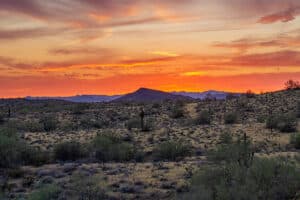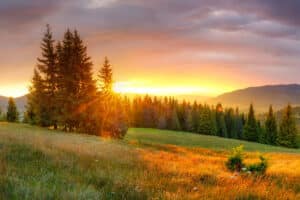When shopping for rural land for sale, we suggest this check list to make sure you don’t overlook anything important. We developed this check list by trial and error over 35 years and by handling over 500 land deals.
When shopping for land, it’s important to consider whether to personally handle all the details yourself or enlist assistance. Our belief is that there is not a right or wrong way to shop. The decision depends on your available time, the depth of your contacts, and your experience with the rural land market.
If you plan to handle the details, here is a “to-do” list that will help you find your dream property at a dream price.
1. Be clear on why you want to own land
Hunting, investment, rural residence and family recreation are all good reasons for owning land, and each one leads to a different kind of land. For example, if you plan to live on the land, legal physical access and proximity to public services will be important. Be clear on your intentions so you can focus your search. Consider how you will use the land, and in what way your wife, husband or children wish to be involved. Another example: land bought as a timber investment requires a different kind of timber than land purchased for deer or turkey hunting. The key to fewer regrets is thinking in detail about how the land will be used and involving your family in the shopping effort.
2. Look at many properties
Like shopping for anything, the more you shop, the better deal you’ll find. It’ll probably be a better price and more suited to your intentions. Our experience is that people change their minds about many details once they do some shopping. Looking at a lot of deals can be challenging because it takes a lot of time, but it’s important. Keep in mind that easy-to-find properties (on the internet) are only a small part of all the land available for new ownership. That’s because many more properties are promoted by thousands of hard-to-find landowners or small-town agents. In fact, our research shows that many properties available for purchase are not on the market at all. So keep looking until you find your dream property.
3. Inspect the property
Only a few properties will have all of the physical characteristics you desire. To determine suitability you’ll want to physically inspect any possible purchase. Depending on intended use, things to consider are neighborhood desirability, ease of access, timber species and age & quantity, soil productivity, how the land lays (topography), presence of creeks, quality of pastures, existence of boundary line & corner markings, potential boundary or access problems with neighboring landowners, etc. Whenever you buy land, remember that one day you may want to sell it. So think about that day now and make a better buying decision. Whatever appears to be a problem for you right now will likely be a problem for future buyers too. To inspect a property you’ll need aerial photos and topographic maps with the boundary lines indicated. Get out and walk the lines. A good source for boundary line information is the county tax assessor office. In fact, many counties have tax maps online. And, there are private sources for paper and online tax map data. A consulting forester can help with an inspection.
4. Talk to the property owner
Believe it or not, people will say they want to sell their land and give you all kinds of reasons, some of which have nothing to do with a sincere interest in selling. It might be for a free appraisal, or even for the attention. So you should interview the property owner to assess the strength of their motivation to sell. A property listed by an agent should already have this step completed. But not all agents do this, and some don’t do it correctly. So, ask good questions of the owner or listing agent, such as, how long it’s been on the market, how many price changes there have been, how many offers have been made, how many different agents have listed it, and why the owner is selling.
5. Confirm the acreage
Oftentimes, most rural land has never been surveyed. The fact is, without a survey, no one really knows exactly how many acres are in a tract. For example, the deed may say 160 acres because the property is 1/4 of a Section (a perfect Section is 640 acres), but the tax assessor may say 155 acres. Each have their reasons, but without a survey neither should be viewed as exact. Because surveys are expensive ($0.40 to $0.80 per foot), most land buyers make a “rough check” on acreage and live with the ambiguity. Examples of “rough checks” include plotting the boundary lines (as indicated by the tax map) on a topographic map or aerial photograph with known scale. Another example is pacing the boundary lines (assuming they are visible on the ground) which is also a good way to check for encroachments by your neighbor (a loss not covered by title insurance). Your forester can help you do this and may have a GPS which is also a good “rough check”. Sometimes a lender, seller or buyer will require a survey. But unless there is reason to suspect a problem, a “rough check” will find serious errors and save a lot of money if you can live with a little uncertainty.
6. Confirm the timber value
Timber can be worth as much as $4,000 per acre in some areas. And, a property that looks clear cut along the road may have excellent timber on the back side across the creek. So, if a property is timbered, it’s a good idea to have a consulting forester walk the property for a “rough check” on timber value. Testing the asking price of a property will require you to have some idea of the timber value. Many times a walk-over is enough of a check if the timber has unexceptional value. The cost of a walk-over will be somewhere around $350. However, most foresters will give partial credit of this cost towards a formal appraisal if the walk-over indicates a timber cruise is in order (a timber cruise is the process of counting and measuring the trees). A timber cruise and appraisal will typically run about $5 per acre. But, it’s a small price to pay for peace of mind (and good info for establishing your timber tax basis).
7. Test the asking price
It’s not unusual for land sellers to have an unrealistic price. So, independently testing the asking price is very important, and having some facts makes your decision more sure. Study actual sale data. Get an appraisal, retain a real estate professional or go to the courthouse yourself. Otherwise, your estimate of fair value will be shaped by coffee shop talk or what an owner asks for their land – all are poor guides for fair pricing. Sale data is available at the county probate office if you know how to search. Be sure the sale data you consider is of property similar in to the property you are looking at (similar size, location, timber value, access, land quality & use). If the property is listed with an agent, they should be able to provide you with comp sale data. But some agents and most landowners don’t look at this data before setting an asking price.
8. Examine the title
A title examination is a written report on the legal history of the property. It identifies the claims of others in the land (for example, a long lost cousin with a 1/64th interest), and informs you of the limits to your rights as the new owner (for example, the rights of the power company who have a transmission line across the property or, a neighbor with a road use easement). It can identify mineral interest (but may not) or the legal condition of the road to the property (just because there is a road does not mean you have unrestricted use of it). Many people take this step after a contract is signed. But in our experience, a title exam is a cheap way to find a “deal killer” early and save time and money. A title exam (or abstract) can be purchased from a local attorney or title company; it will take about a week to complete and typically run about $300.
9. Determine if you will use debt
Land and timber investments rarely earn the loan payment, and your cash may be needed for other matters. Finding the right balance of cash and debt is important, so talk to your financial advisors early in the process.
10. Contract negotiations
Once a price is agreed upon, there will still be things to work out between you and the seller. For example, who pays for title insurance, closing attorney, survey if needed, mineral inclusion, cost to get the deed recorded at the court house, loan cost, etc. It’s good to address these issues early in the negotiating process.
11. Setting up tax basis accounts
Once you buy the property, it’s a good idea to set up two accounts for tax purposes (known as your basis). 1) Determine the value of your timber at the time of purchase (your timber basis), then; 2) the balance of the purchase price is allocated to land (your land basis). The purpose for this is to allow you to calculate capital gains tax should you sell some or all of your timber or land later on. Capital gains tax is only charged on the amount of gain from a sale above the amount of your basis.
12. “Current Use” property tax status
“Current Use” is a special property tax status that allows rural land to be taxed at a lower rate than other types of real property such as residential or commercial. Current Use can reduce your tax bill by 50% or more. If the property you buy does not have this status, then you must apply for it – it is not an automatic event. The tax assessor’s office in your county can verify the tax status and help you apply for Current Use if you do not already have it.
This preceding article is an excerpt from Tom Brickman’s e-book, “Buying Rural Land: Tips and How-to’s”, a collection of well-written, quick reads to help you find a rural property you’ll love and simplify getting it done. Download the e-book and learn from a seasoned pro with 40 years of experience.
This content may not be used or reproduced in any manner whatsoever, in part or in whole, without written permission of LANDTHINK. Use of this content without permission is a violation of federal copyright law. The articles, posts, comments, opinions and information provided by LANDTHINK are for informational and research purposes only and DOES NOT substitute or coincide with the advice of an attorney, accountant, real estate broker or any other licensed real estate professional. LANDTHINK strongly advises visitors and readers to seek their own professional guidance and advice related to buying, investing in or selling real estate.










One thing I would add is have water features tested. It seems to be more and more common that farm and industrial runoff is full of Ecoli and other nasty stuff. The last thing you want to do is buy a property with a wonderful creek on it and then find out that the water is toxic and will make the grand-kids very sick.
You are SO RIGHT. AND-what if after you buy the property, someone diverts a run off from their property- that is toxic, like from a chicken farm,and they/that- contaminates your ground water supply. Would EPA make them clean it up?- the poisons? think if they destroy your property-they should be made to buy it from you,plus, the costs associated with finding another property, and moving to it, ect. Another thing I have experienced, I bought in a rural community,and the dirt road that I live on,a neighbor decided to make the identifying pins of the road,where he wanted them to be so that he would have more land and force traffic onto my land,totally.I bought my property, and what my plat says is mine,is,mine,and how the country created this road,way back,should be grandfathered in. You really do have to be completely thorough.
Good Read. Thank you.
I do appreciate the information.Thank You!
It’s great that you mentioned that when looking for country properties, I should look at various lands until I find my dream property because lots of available land for purchase are not on the market. My husband and I are retiring soon, and we want to purchase a country property so we can spend our retirement years there. I’ll take note of your advice so we would be able to find a piece of land that’s the exact fit for us. Thanks!
I would also recommend carefully assessing past, current and potential future land uses for adjacent properties that may impact your enjoyment of the property you would like to purchase. Talk to the local jurisdiction (County, Township or City) to know what the zoning is in the surrounding area. I was looking at a piece of property and after I called the County about neighboring land uses found out that the property abutted a former 20 acre garbage dump that is now a “nature preserve”. Lots of potential impacts (contaminated groundwater, soil vaports, etc.) to the property I was looking at.